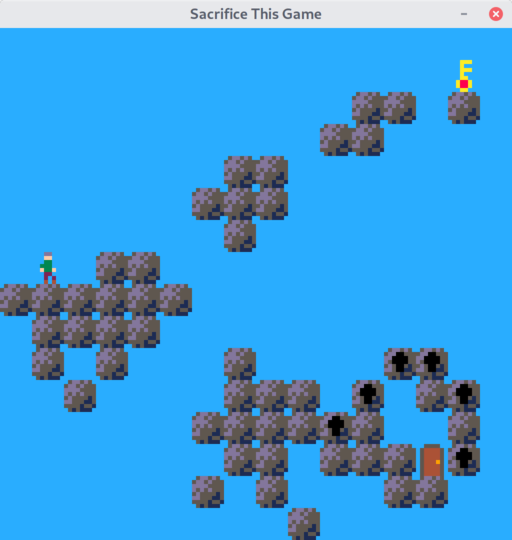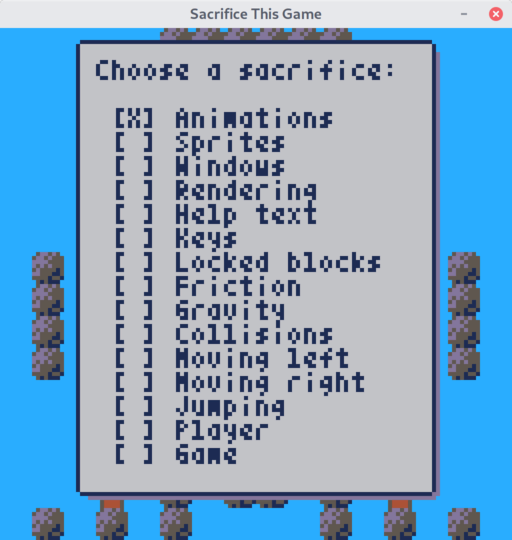Ludum Dare 43: Sacrifice This Game
Last week-end I participated in the 43rd Ludum Dare game jam. Participants in the Ludum Dare “Compo” (one of the two competitions, which I took part in) have to make a game based on a given theme in 48 hours without using external assets or code besides libraries.
My Game
The theme for this year was “Sacrifices must be made”. I quickly came up with three relatively bad ideas:
- You are General Douglas Haig during the infamous battle of the Somme. Your job is to send as many young Englishmen get murdered on the frontline as possible.
- A Mayan sacrifice simulator, where you need to pry open someone’s chest and recover their heart.
- A platformer in which you need to give up one game feature at each level.
I decided to go for the third one because the other two were too gruesome, and I wasn’t sure what to do with them anyway.
The final result is a game which I called “Sacrifice This Game”. You can find it on the ldjam website. It looks like this:

The game is a basic platformer. You play with the directional arrows.
Enter selects an item in the menus. Tab shows the
pause menu. The goal is to reach one of the doors. Keys open locked blocks.
That’s it.
Well, except that, when you enter a new level, you are faced with this screen:

Before continuing, you have to sacrifice one feature of the game. It can be anything, from animations, to moving left, to gravity. Once a feature is sacrificed, it stays that way for the following levels. If you are stuck, you need to go back and change the choices you made earlier.
Technical Aspects
The game was made with Python and the Pyxel retro game engine. In retrospect, I would’ve preferred to make the game in JavaScript, because Python is a pain to distribute. However, using Pyxel was a great experience, and it allowed me to fast-prototype the game. With another engine, I’m not sure I would’ve had time to finish it—especially in JS, which I don’t know too well.
I am actually quite proud of the result! I think it’s the best game I made so far, though I would’ve enjoyed to spend more time polishing the level design and fixing the terrible hand-made collision system. And cleaning the awful code. I’m thinking of porting it to JavaScript, in which case I would probably spend some time improving those aspects.
The source is available on the Github repository. I would not recommend looking at it, though.